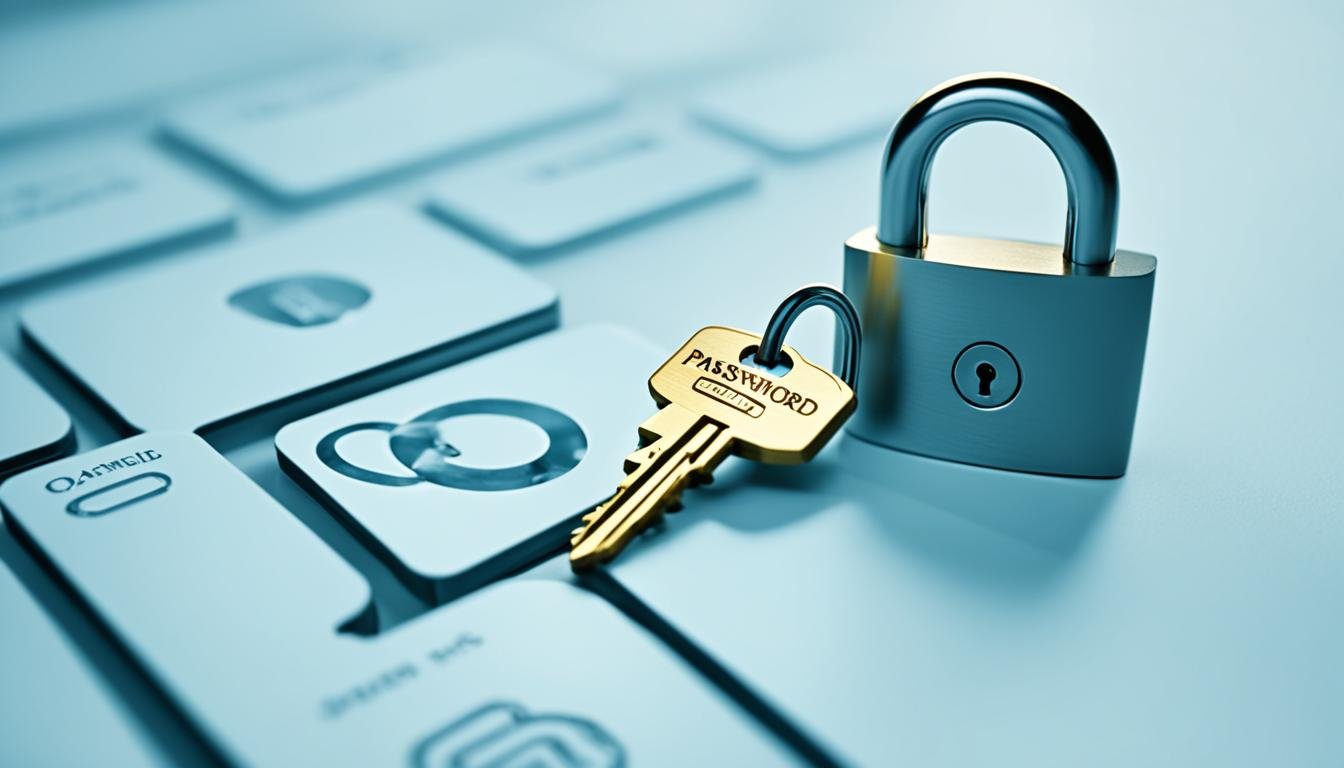Phishing Prevention: A Comprehensive Guide for Irish Users
Did you know that about 3.4 billion phishing emails go out daily? This huge number means phishing is a top cybercrime threat in Ireland. Cybercriminals use phishing to trick you into giving up important info, like bank details. With smishing attacks hitting almost three-quarters of companies, knowing how to prevent phishing is key.
This guide is here to help Irish users spot and stop phishing attacks. We’ll look at different tricks scammers use and give you real-world advice. This info will boost your online safety and protect your digital life. They include spotting phishing signs, changing social media settings, and using extra security like multi-factor authentication.
If you do get caught in a phishing attack, we’re here to help. We’ll talk about what to do next, such as changing your passwords and letting your bank know. Plus, how you can report it to the authorities.
Key Takeaways
- Understand the prevalence of phishing attacks, with 3.4 billion malicious emails sent daily.
- Recognize the various types of phishing, including email phishing, smishing, and vishing.
- Learn to identify phishing lures such as urgent requests for personal data and too-good-to-be-true offers.
- Implement multi-factor authentication as an effective phishing prevention strategy.
- Stay informed with resources from the NCSC, An Garda Síochána, and Age Action websites.
In the next sections, we’ll dive into each part of preventing phishing. We’ll give you tools and advice to keep safe online. Stick with us to learn all about phishing and how to fight it.
What is Phishing and Its Impact on Irish Users?
Phishing is a type of cyber-attack that tricks people into sharing private info. This can happen through email, SMS, or fake phone calls. Attackers keep getting smarter, using psychology and emotions to trick us.
Definition and Types
Phishing is all about getting someone to give up their personal details. There are different types, including:
- Email Phishing: Fake emails that try to get your secret info.
- Smishing: Scams through text messages on your phone.
- Vishing: Scammers make phone calls to try and steal your data.
- Spear Phishing: They target specific people, like bosses or IT staff in a company.
Impact on Personal and Professional Life
In Ireland, phishing hits both our personal and work lives hard. It can make us worry about our money and privacy. Phishing can also lead to scams and stealing our identity.
For businesses, it’s even worse. It can cause big money losses, harm operations, and ruin reputations. Just think, in 2022, 19% of breaches were because of stolen logins. And phishing caused 16% of these incidents.
Statistics and Trends in Ireland
Looking at the numbers, we see phishing is a big deal in Ireland. The attacks are getting more clever and focused. Here are some key points:
- Phishing was the second leading cause of breaches in 2022.
- In Q1 2022, many industries were hit hard by phishing.
- Every day, over 3.4 billion fake emails are sent, making up half of all emails.
- In Ireland, finance got hit the most, while e-commerce wasn’t far behind.
- There are over 611,877 phishing websites out there right now.
- Brazil is the top target for phishing. It’s also a major way hackers get into health organizations.
The number of phishing attempts keeps going up. This shows we must stay alert and use strong security measures.
Types of Phishing Attacks Targeting Irish Users
Phishing attacks pose a big risk to Irish users, targeting the digital platforms they use often. Attackers use methods like email phishing, SMS phishing, voice call phishing, and spear phishing. These attacks are well-known and widespread.
Email Phishing
Email phishing is a top concern, aiming to deceive people through emails. Scammers pretend to be from trusted sources to get sensitive details. In 2020, almost all major data breaches started this way.
Smishing
Smishing is the act of tricking users via fake text messages to get personal info or money. Messages look like they’re from familiar places, asking to click on risky links or download files. With many using smartphones, smishing is a growing concern.
Vishing
Vishing tricks people into sharing personal details over the phone. Scammers might pretend to be from a bank or the government to gain trust. Since voice makes communication feel personal, these attacks can be very convincing.
Spear Phishing
Spear phishing targets certain individuals or groups with crafted, believable messages. Cybercriminals use info from social media to enhance their scams. This means victims are more likely to fall for their schemes. Businesses need to be especially careful, given the rise in these sophisticated attacks.
Phishing is a constant worry, with attackers using various methods to target people and companies. Knowing these tricks helps in being more cyber secure and preserving important data.
Common Phishing Tactics and How to Recognize Them
Today, phishing attacks are a big threat in the digital world. Cybercriminals always find new ways to trick people. It’s key to know about common phishing tricks and the signs to spot scams to stay safe.
Impersonation of Reputable Sources
Phishing often involves pretending to be trusted names like banks, famous companies, or agencies. They send emails or make sites that look real. These messages might start with “Dear Customer” and come from fake but similar emails. The FBI says this has led to $26 billion in losses.
Urgency and Fear Tactics
Scammers also try to make you rush by creating a fake emergency. They might say your account needs fixing now to dodge fees or prevent a blackout. This is meant to get you to act fast without thinking. A report by IBM shows 91% of successful data breaches start with a phishing email.
Offer of Something Too Good to Be True
Phishing emails often promise unreal gifts like winning the lottery or getting an unexpected pile of cash. These too-good-to-miss offers aim to make you click on bad links or share your personal details. With more people working from home, it’s more important than ever to avoid these scams to prevent identity theft and losing money.
| Phishing Attack Technique | Example | Impact |
|---|---|---|
| Impersonation | Fake bank emails | Identity theft, Financial loss |
| Urgency and Fear | Account suspension notices | Data breaches, Trust loss |
| Offer Too Good to Be True | Prize notifications | Personal data theft, Financial scams |
Knowing about common impersonation tactics and the danger of urgency in phishing is crucial. Being careful to spot scams can help protect you from these harmful schemes.
Anti-Phishing Techniques: Protecting Yourself Online
Phishing attacks have gotten smarter. Because of this, it’s important for us to use strong safety measures. In this guide, we will look at how you can protect yourself better online.
Multi-Factor Authentication
Multi-factor authentication (MFA) boosts security by adding extra steps. It asks for more than just a password. For example, you might need a code from your phone or a fingerprint. By using MFA, it becomes much harder for bad actors to break into your accounts. Studies show that places using MFA have fewer successful phishing attacks.
Anti-Virus and Anti-Malware Software
Having good anti-virus software is crucial. It stops harmful software before it can do damage. Ransomware, for instance, hit about 47% of companies after a phishing attack. Keeping your anti-virus up-to-date blocks new tricks from cybercriminals. A regular scan of your computer protects your info from these dangers too.
Regular Software Updates
Always update your security software. Doing this keeps your digital life safe. These updates fix any holes that may allow for phishing attacks. It’s best to set your security software to update automatically. Also, don’t forget to update all your other software, like web browsers. This will make sure you’re as secure as can be.
Email Security Best Practices for Irish Users
Keeping your emails safe is vital to protect personal and work-related information. Cybercriminals are using more phishing attacks now. So, it’s more important than ever to be cautious online. Here are some top tips for staying safe in Ireland. These methods are proven to help avoid cyber threats.
Hover Before You Click
Criminals often hide harmful links in emails. Always hover over a link before clicking it. This checks if the link is real. By doing this, you can spot fake URLs set up to trick you. Phishing attacks have increased a lot in 2020 and beyond. Being careful is key.
Check Sender Details
Looking closely at who sends you an email is very important. Phishing emails can look like they’re from trusted sources. But, slight differences in the sender’s email address give them away. By checking who an email is really from, you can avoid falling for their tricks. It’s noted that more than 70% of companies in Ireland dealt with phishing in 2021.
Report Suspicious Emails
If an email doesn’t seem right, report it. Let the right people know or your email provider. This helps make the internet safer for everyone. With a new phishing attack happening every 39 seconds, reporting them is key in the fight against cybercrime.
| Phishing Statistics | Data |
|---|---|
| Number of Phishing Attacks per Day (2022) | 35,000 to 50,000 |
| Increase in Phishing Attacks (March 2022) | 667% |
| Small Businesses Closing Due to Hacks | 60% |
| Percentage of Users Unable to Identify Phishing Emails | 97% |
| Companies Using Anti-Virus/Firewalls | Insufficient Alone |
Phishing Prevention: A Comprehensive Guide for Irish Users
In today’s digital age, keeping our info safe is crucial. This guide is for Irish users to beat phishing. With strong cyber safety, you can keep your data safe online.

A Bank of Ireland survey showed people see the bank as fighting fraud well (Red C, Feb ’24). This shows how important it is to know about scams. The Bank of Ireland hosts free fraud events, like in Ranelagh on June 28th at 4:30 pm and Blanchardstown on July 18th at 9:00 am.
The bank gives out emergency fraud contact numbers for different areas. They teach how to spot scams, protect against ransomware, and avoid email fraud. TextChecker verifies texts from the bank, a big help.
For better safety, don’t send things like card details over text. This small step can big cut the risk of phishing. The Central Bank of Ireland is updating rules to protect consumers more. They welcome feedback until June 7, 2024.
Know how phishers work to spot their tricks. They might use fake emails, texts, or calls to trick you. Look out for too-good offers and strange messages. Staying sharp is the best way to stay safe online.
The Bank of Ireland and others provide lots of help on staying safe from phishing. Remember, staying ahead and learning are crucial for digital safety.
How to Secure Online Banking and Prevent Identity Theft
Online banking security is more important than ever. It’s crucial to use safe practices and be aware of scams. Doing so can protect your money and personal information from thieves.
Secure Banking Practices
To bank online without worry, stay vigilant and update often. Always make your software is up-to-date and use secure websites for any bank transactions. Letting only trusted people access your accounts remotely is a smart choice, too.
- Regularly update your operating system and anti-virus software.
- Use ‘https’ websites for secure communication.
- Limit remote access to trusted sources only.
Recognizing Fraudulent Bank Communications
Knowing what real bank messages look like helps keep you safe. Remember, your bank will never ask for your password or PIN through email. Watch out for emails that look real but are actually scams. Always research before trusting any request that you didn’t see coming.
- Banks will never ask for your password or PIN.
- Be careful of sophisticated phishing emails.
- Verify unsolicited requests.
Steps to Take if Your Data is Compromised
If your data gets out, act fast. First, change your online passwords to shut out intruders. Then, tell your bank about what happened and ask what to do next. You should also let the police know and keep an eye on your credit for any odd charges.
| Step | Description |
|---|---|
| Change Passwords | Immediately update all passwords to prevent unauthorized access. |
| Contact Your Bank | Inform your bank about the breach and seek their guidance. |
| Report to Authorities | Notify local authorities to take legal actions. |
| Monitor Credit Report | Keep an eye on your credit report for any suspicious activities. |
Check your bank and credit statements often. This helps you catch any funny business early. By doing this, you can stop identity theft in its tracks.
Phishing Scam Awareness in Ireland: Educational Resources
Understanding phishing scams is key for anyone on the internet. Cyber attacks, especially in healthcare, are on the rise. Using Irish resources and learning about online safety can really help.
Official Irish Resources
The National Cyber Security Centre (NCSC) in Ireland is a top resource. They guide on creating safe passwords, using Multi-Factor Authentication (MFA), and spotting phishing acts. NCSC also warns about risks when using platforms like Slack and Google Drive in business, due to some phishing attacks.
Garda Síochána Reports and Alerts
Ireland’s police, An Garda Síochána, keeps us updated on phishing and ransomware threats. Talking about the Health Service Executive (HSE) hack in 2021 really highlighted the issue. This attack cost over €100 million and required €650 million to make IT systems safer. It’s a big sign of the harm phishing scams can do.
Online Courses and Training
Online safety courses are a great way to up your awareness on phishing. HSeLanD has more than 200 eLearning courses on cybersecurity. They help you learn how to spot phishing and protect your online information. This kind of learning is important, as most data breaches happen because of social engineering and phishing.
How to Report Phishing Attempts in Ireland
In Ireland, reporting phishing attempts is vital for everyone’s safety online. Here’s how you can report phishing in various ways to protect yourself and others.
Reporting to An Garda Síochána
If you come across a phishing attempt, let An Garda Síochána know. Their cyber reports help stop cybercrimes, including attacks on small businesses and important systems. Reporting not only keeps you safe but also helps in fighting cybercrimes widely.
Using Email Provider Services
Email platforms like Gmail, Outlook, and Yahoo lets you report phishing emails easily. They have tools to spot and remove harmful emails, safeguarding all users. This makes it harder for phishing emails to trick people.
International Reporting Agencies
If the phishing attack spans multiple countries, reporting to global agencies is key. These groups work together to fight against phishing across the world. By reporting through these channels, you help in a global effort against phishing.
| Organization | Contact Number | Address |
|---|---|---|
| ComReg | +353 018049707 | One Dockland Central, Guild Street, Dublin, D01 E4X0 |
| Central Bank of Ireland | +353 (0)1 224 6000 | New Wapping Street, North Wall Quay, Dublin 1, D01 F7X3 |
| CCPC | +353 (0)1 402 5500 | Bloom House, Railway Street, Dublin 1, D01 C576 |
Conclusion
Wrapping up our guide on how to avoid phishing in Ireland, it’s clear that staying alert and informed is key. In 2022, phishing attacks have surged by 61%, making them a major threat. It’s vital to up our game in cybersecurity.
Reports show only 2.9% of workers click on phishing emails, thanks to better awareness. But, the tricks phishers use, especially against Gmail users, are getting more clever. This means we must keep learning and handling emails carefully to stay safe.
The Cyber Security Strategy from 2019 to 2024 sets out to keep Ireland safe from cyber threats. It focuses on meeting global security standards. As phishing gets tougher, sticking to the best methods and staying up-to-date is crucial for everyone’s safety.
Source Links
- What is Phishing? Techniques and Prevention – CrowdStrike
- A Comprehensive Guide to Phishing Training for Employees
- What is Phishing? A Complete Guide
- What is Phishing? Types of Phishing Attacks | Fortinet
- What Is Phishing? Examples and Phishing Quiz
- 20 types of phishing attacks + examples and prevention tips
- The Ultimate Guide To Phishing
- Phishing Attack Examples and how to Prevent Them
- Anti-Phishing | Menlo Security
- ManageEngine Log360
- What is Social Engineering? Examples and
- How to protect against phishing: 18 tips for spotting a scam
- Phishing Attacks: 10 Ways To Protect Yourself
- 22 Ways to Protect Yourself Against Phishing Attacks
- Preventing Phishing Attacks Best Practices
- Top 10 Email Security Best Practices for 2023: Protect Your Communications
- Phishing Awareness: Ultimate Guide To Protect Against Phishing Attacks
- Security Zone – Bank of Ireland Group Website
- Consumer Protection Codes and Regulations
- What is phishing? + How to spot and avoid it – Norton
- How to Protect Yourself from Identity
- How to spot and avoid scams
- 8 Ways To Prevent Identity Theft | MetaCompliance
- RISING THREAT OF MALWARE ATTACKS IN IRELAND AND UNITED KINGDOM HEALTH CARE SECTORS
- The Irish Health Service’s portal for online learning
- Phishing Attacks
- Online safety
- Guide: How to Report Scam in Ireland
- An Annotated Field Guide to Identifying Phish – TidBITS
- 12 Most Common Types of Cyberattacks Today – CrowdStrike








